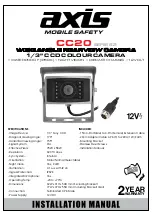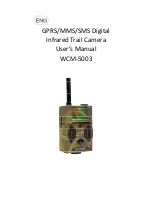
Zenit E User manual, 1971 year
– 1 –
Zenit E
This text is identical to the one in the Instruction Manual, English version, 1971 year.
Attention!
The present Instruction Manual contains the basic characteristics and essential operating principles of
the ZENIT-E camera and cannot be regarded as a handbook on photography.
Before using, the camera, make thorough study of the handling rules and operation procedure of the
camera.
Due to ever-advancing development of the camera construction, there may occur minor differences
between the text of Manual and the construction of your camera.
To make the operating of the photocell reliable and to increase its service, do not subject the
photocell to the exposure of the direct sunlight.
Screw out or screw in INDUSTAR-50-2 lens only by thread rolling of depth of field scale ring, and
HELIOS-44-2 lens — by thread rolling of focusing ring.
Do not touch the mirror surface with fingers, because this may damage its coating.
Do not rotate the shutter release button for no reason, while releasing the shutter, to avoid
disengagement of the shutter cocking mechanism.
Do not rotate the exposure time dial within the interval between “B” and “500”.
Always wind the shutter as far as it goes to avoid blank exposures.
1. Application and Advantages of the “Zenit-E” Camera
ZENIT-E is a single-lens reflex camera, fitted with a built-in and uncoupled exposure meter and with a
reflex mirror of instant return type.
The instant return mirror permits continuous viewing of the object to be photographed, except for
the moment of exposure. The built-in exposure meter is especially important for shooting on a colour
film.
Thanks to its specifications, the ZENIT-E camera can be used for most various amateur shooting
and a number of special shootings.
The ZENIT-E camera can be used with commercially available interchangeable lenses with focal
length from 37 to 1000 mm.
The design of the reflex viewfinder (groundglass focusing) allows to apply extension rings, to make
with their help reproduction works. It allows to photograph small objects with large magnification
(macrophotography) and to photograph with the help of microscope (microphotography). Using the
ZENIT-E camera you can shoot close-ups or at long distances.
Instant return mirror, built-in exposure meter, shutter setting lever, hinged back cover of the camera,
small dimensions and light weight — all these are important advantages of the ZENIT-E camera.
The camera is supplied in two variants: with HELIOS-44-2 lens 58 mm f/2 and with INDUSTAR-
50-2 lens 50 mm f/3.5. The camera can be used with standard cassettes.
























